Children who bring their parents along are welcome in the museum. Our collections include toys, games, and children's furniture, as well as replica clothing that children can try on. Childhood memories still color the images of our 17th-century toys.
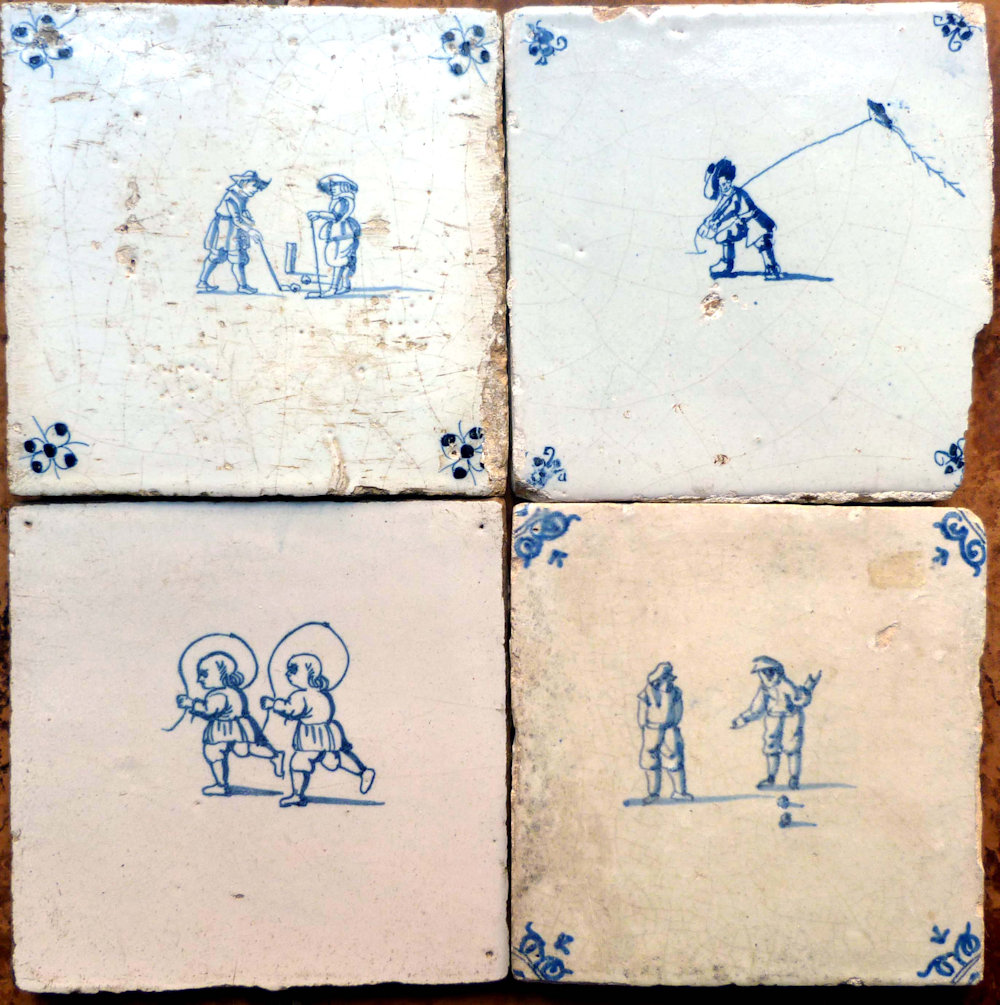
John Robinson, the Pilgrims' minister, warned against treating children like little adults; they should not be made "men and women, before they become good boys and girls," he said. Many children began training as future housewives or laborers from a relatively young age - eight or nine years old. But children were not expected to spend all day working. Seventeenth-century depictions of children playing show us a wide variety of toys, ranging from dolls and toy soldiers, through hoops, jump-ropes, whirligigs, hobby-horses, tops, toy drums, and balls. Tobacco pipes were borrowed from smokers for blowing soap bubbles. Children also played golf and flew kites, not to mention the occasional winter sport of skating. Poor children could skate by tying large sheep bones under their shoes to serve as runners. Many different group games were played as well, such as varieties of marbles and knuckle-bone throwing. Although only one toy belonging to a Pilgrim child has survived - the whistle that was probably a teething toy, inscribed E.W., found at the site of Edward Winslow's house in Marshfield, Plymouth Colony - we can assume that Pilgrim children played the games common to the time.
[excerpted from Bangs, Strangers and Pilgrims, Travellers and Sojourners, pp.389,404].
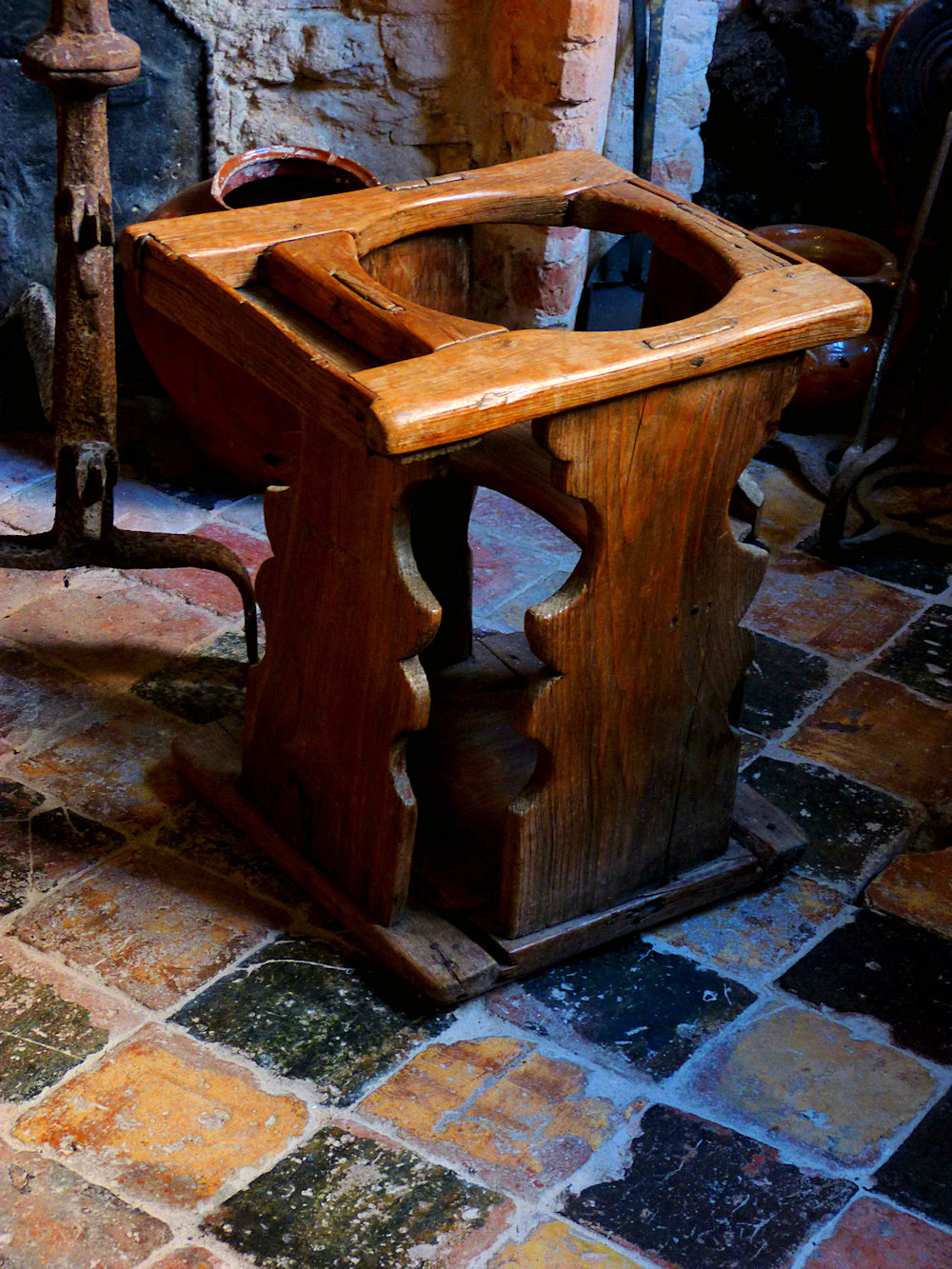
Besides toys and games, the museum's collections include children's furniture. In the museum's corner room the original fireplace from 1370 is set up for cooking.
A mother stirring the pot on the fire could easily feed an infant sitting nearby in the 16th-century lowchair.
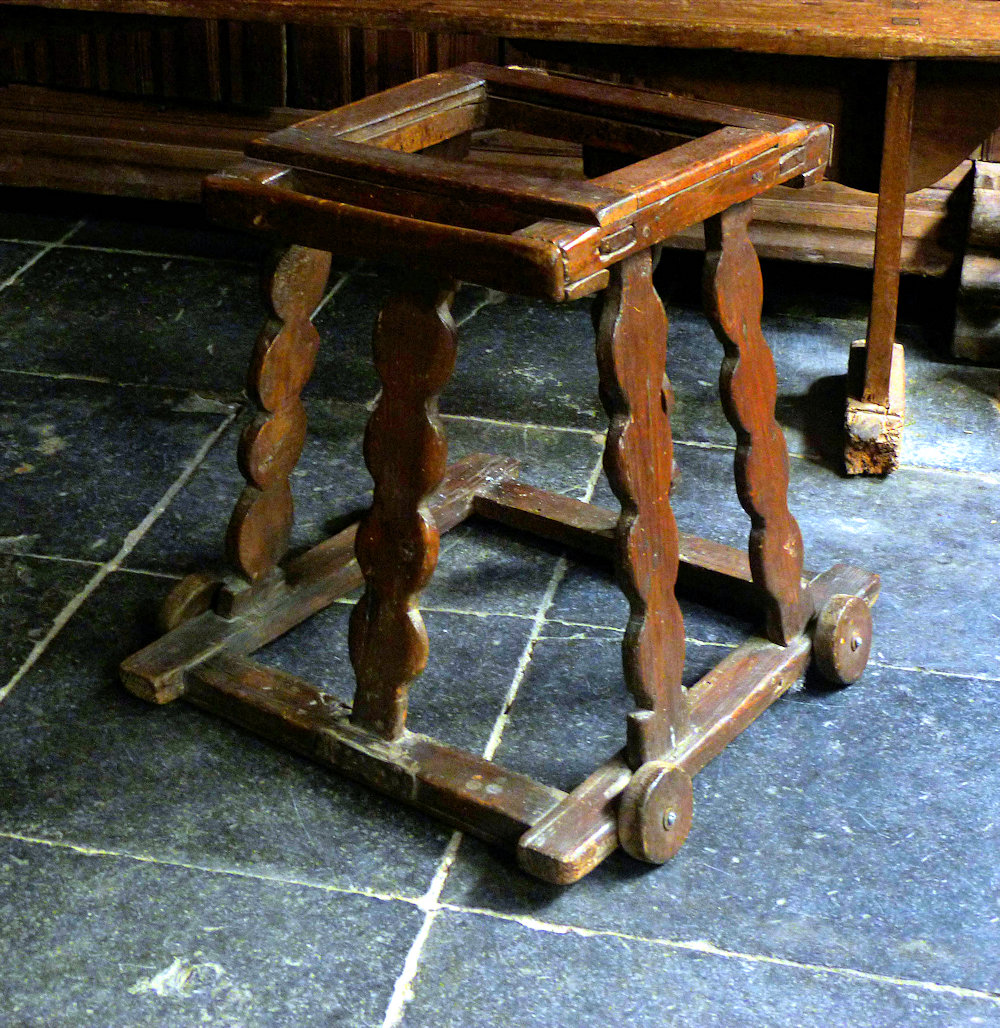
A child learning to walk could use a walker. Ours does not have wheels that swivel.
The child could be set in a straight path, back and forth, with no danger of turning suddenly and walking into the open fire on the hearth.
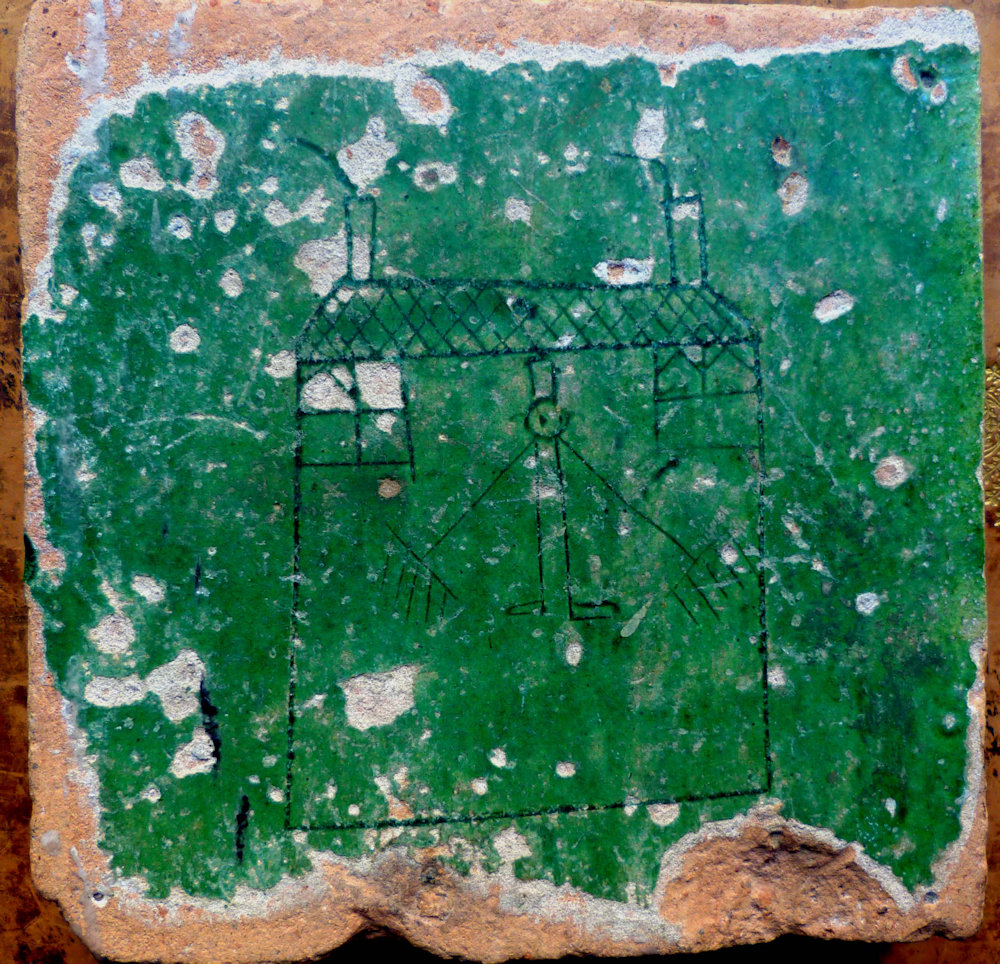
The fourth picture here shows a child's stick-figure drawing scratched into the clay of a large floor tile from ca. 1600.
The drawing is under the glaze; it was probably made by the child of a tile maker, although perhaps a child living in the house where the tile was used was allowed to draw on the clay. The child's stick figure drawing comes from a house close to the museum.
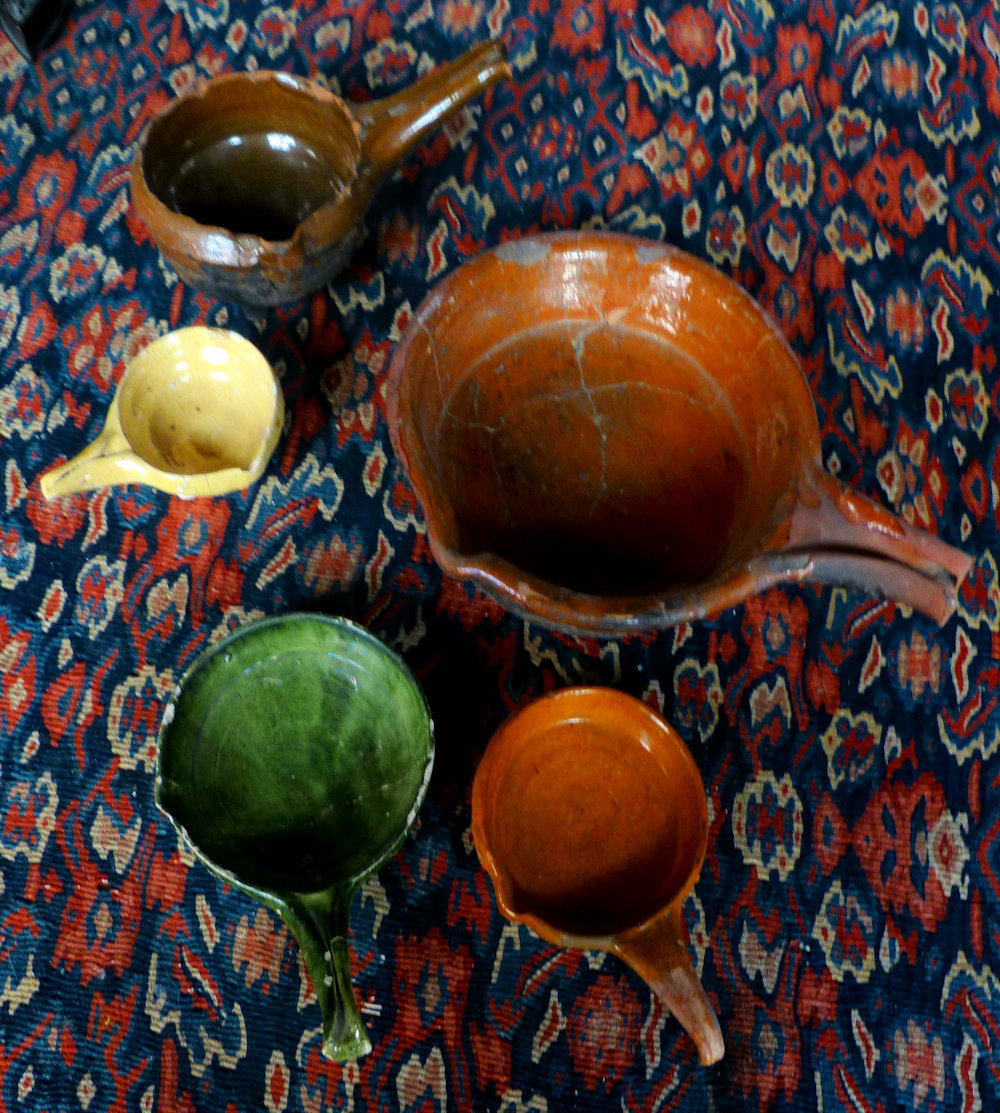
Children’s Tasks
Girls were expected to learn to manage their future households through playful imitation of their mothers. Dolls could teach a young child how to care for an infant. Small dishes and cooking pans provided practice that would later help produce family meals. Our miniature pancake pans have been used in the fire (the unglazed bases are blackened with smoke). The little sauce pan was made for a left-handed girl; it pours well when held in the left hand, unlike the adult version, which is right-handed.
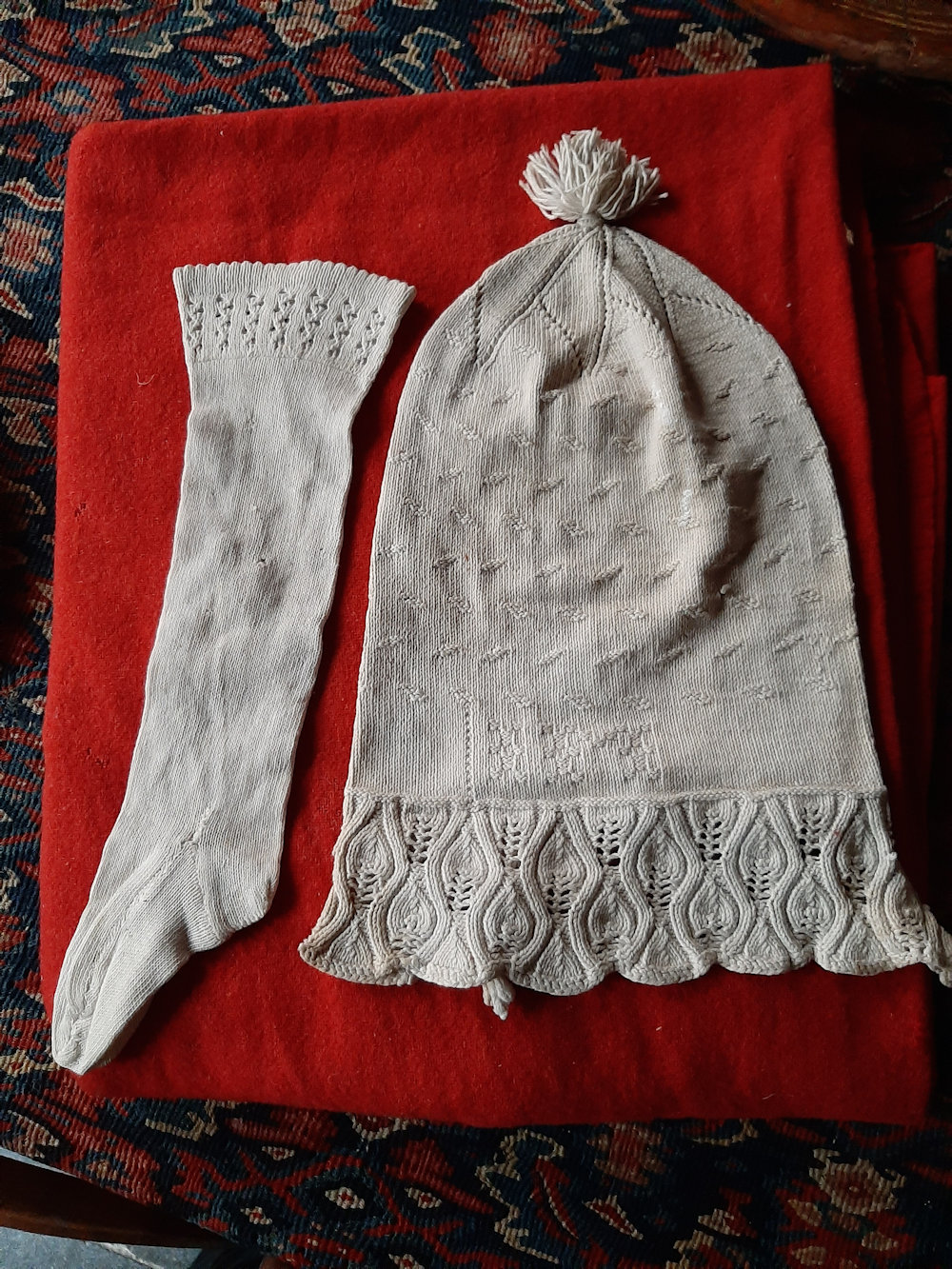
Many trades included tasks that could be carried out by children in the early stages of learning to become skilled workers. Children could, for example, help wash wool, one of the many steps towards spinning and weaving.
Before learning to use a spinning wheel, children could spin yarn using a drop-spindle, throwing it with a twisting action in a gesture similar to playing with a yo-yo. Wool from a distaff held under one arm twisted into yarn as the spindle was sent downwards and retrieved.
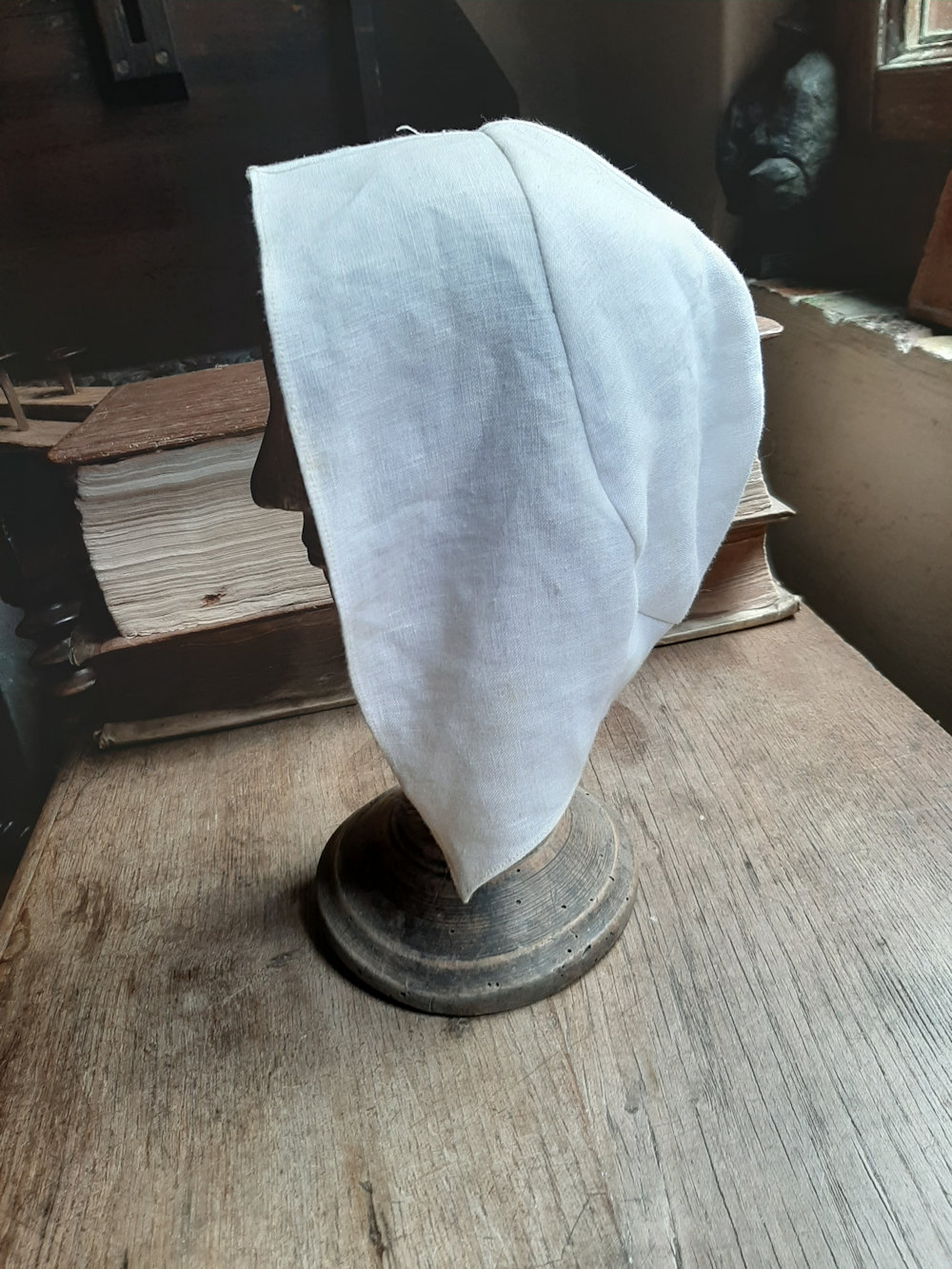
Two jobs that were organized on the basis of child labor were knitting and weaving ribbon or braid. The museum's single stocking (mid 17th-century) is knit from Egyptian cotton with such fine stitches that it could have been the work of a skilled child.
The nightcap's more complex patterns may have required the experience of an adult. These items were found behind the wood panelling of a 17th-century bedstead, finally answering the question, "what happened to the other sock?"
Very fine stitching along the edges and seams of our early 17th-century coif may have been the work of a girl accomplished in sewing. The design is relatively simple, like many pieces of common clothing that did not require the skills of a tailor.